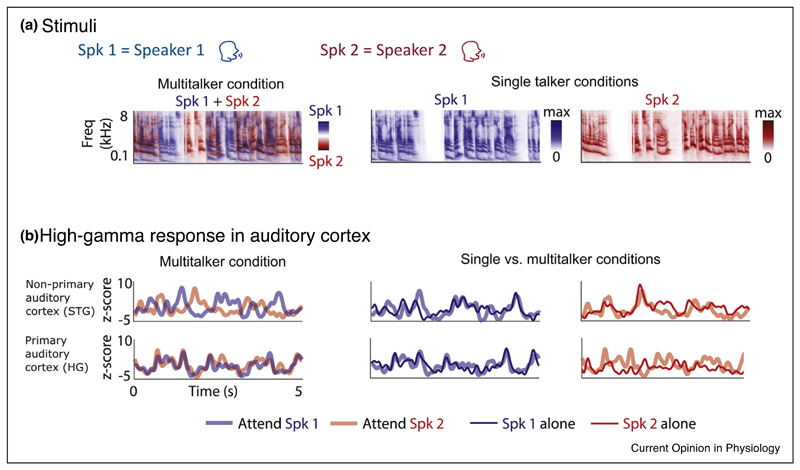Figure 4.
Representations of attended and unattended speech in human auditory cortex. (a) Each plot shows a spectrogram of speech presented to listeners, produced by speaker 1 (Spk 1; male; shown in blue) or speaker 2 (Spk 2; female; shown in red). The left panel is a spectrogram of speech from both speakers when presented together. The spectrotemporal content of the two speech streams largely overlaps, as in many real-world environments. The same speech streams presented in isolation are shown in the spectrograms on the right. (b) Example high-gamma responses from two depth electrodes recorded in one subject: one in the non-primary auditory cortex (superior temporal gyrus; STG) and the other in primary auditory cortex (Heschl’s gyrus; HG). The response in the non-primary auditory cortex changes depending on which speaker is being attended, and resembles the response to that speaker in isolation. Conversely, the response in primary auditory cortex is similar when attending to either speaker, and is dominated by the spectrotemporal content of speaker 1. Therefore, responses in the primary auditory cortex are determined by the spectrotemporal content of the speech, irrespective of attention, whereas responses in non-primary auditory cortex better represent the attended speaker. Adapted from O’Sullivan et al. [82 ••].

